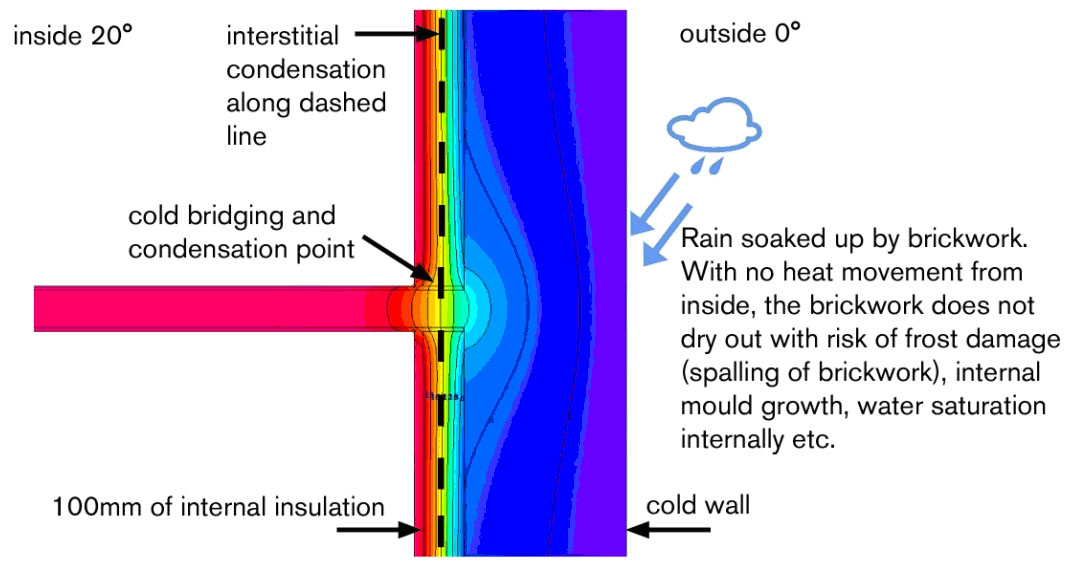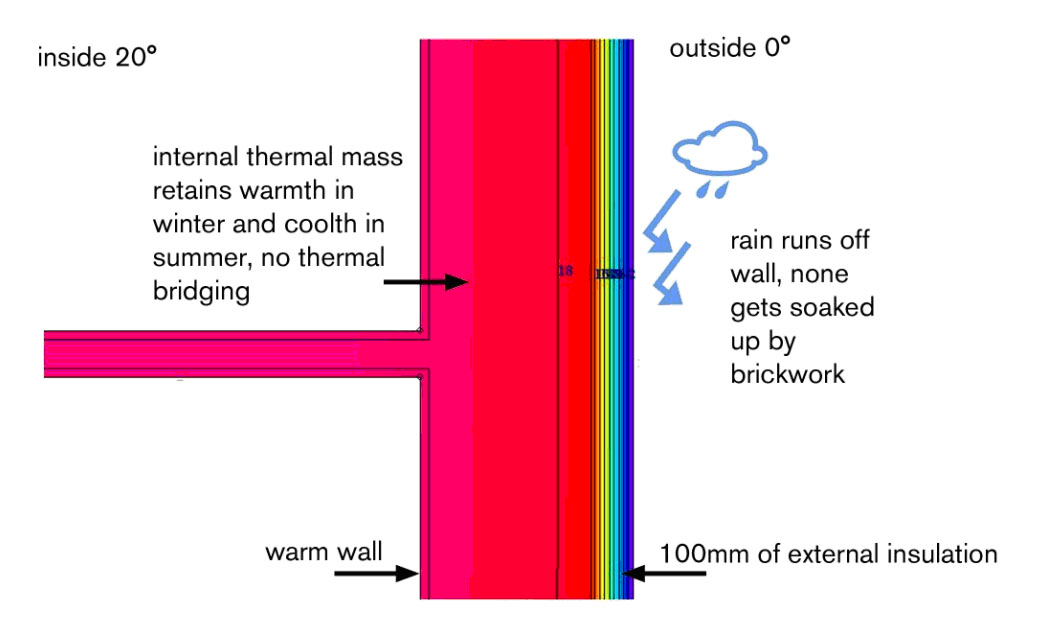bere:architects win planning appeal for external insulation in London Borough of Brent’s North Kilburn Conservation Area.
On the 4th of July it was announced by the planning inspectorate that bere:architects’ planning appeal for 100mm of insulated render on the side and rear of a Victorian house in Brent has been successful.
The 100mm of external insulation is part of a whole house energy improvement strategy which will see the energy required for heating reduce by 88%. In carbon terms this represents in excess of 22 tons of carbon savings per year or a 76% reduction when comparing the houses’ carbon emissions before and after the retrofit.
The inspectorate praised the sustainable credentials of the proposal which had been fully assessed by bere:architects using PHPP. The inspectorate provided the following comments on the low energy aspirations for the house.
“There would be compliance with the objectives of PPS1: Delivering Sustainable Development and its supplement, cited by both principal parties, particularly in terms of seeking to tackle climate change. Furthermore the scheme would accord with UDP policy STR 13 which seeks development with a reduced overall demand for energy and UDP policy BE12 which calls for built forms and technologies to contribute to reduced energy consumption and associated emissions.”
The inspectorate also disagreed with the reason planning provided for refusal, which was that the proposals failed to preserve the character and appearance of the house in the conservation area, stating instead:
“There would be no conflict with S72(1) of the Act; there would be preservation of the character and appearance of the Conservation area. The scheme would also accord with the UDP policies cited in paragraph 7 above. The Design Guide for the Conservation Area which sets itself against rendering or cladding cannot be expected to cover every eventuality and the restoration work proposed to, for example, the front elevation will fully accord with the guidance and make a positive contribution to the street scene....For the reasons given above I conclude that the appeal proposal would not have unacceptable adverse effects on the character and appearance of the host dwelling and the locality.”

Detail 1 – Existing wall at Dyne Road
The amount of internal insulation necessary for effective energy use reduction poses serious risks to the fabric of the house due to interstitial condensation. Reduced drying out of wet brickwork leads to a likelihood of frost damage due to the freezing of wet brickwork. So, internal insulation is not good in terms of building physics. With internal insulation you also have higher thermal bridges, loss of internal thermal mass and inevitably higher U-values and therefore lower energy savings. The wider the internal wall, the worse the thermal bridge will be where the internal partition wall meets the external wall.

Detail 2 - Internal Insulation at Dyne Road
The thermal bridge (PSI value) for the internal insulation detail 2 shown above: 0.16W/mK. This is a significant thermal bridge. The dew point in this detail is on the inside of the external wall (around the 12degree line). This highlights the serious risks of condensation within internal insulation and can result in damage to timber floor joists with the risk of full structural failure in the future. With internal insulation you also lose the internal Victorian detailing of the house and this very disruptive and costly retrofit measure requires residents to move out of their homes for the duration of the work so cannot be considered as a viable option for retrofitting all of the UK’s conservation area housing stock.
By contrast external insulation is non disruptive for residents, keeps the existing brickwork warm, free of damage and accessible for easy maintenance. The thermal bridge (psi) value for the detail 3 below is 0 W/mK this means there is no thermal bridge and no risk of condensation or damage of the wall fabric. The thermal mass of the brick walls can also be utilised as it is on the inside of the house.

Detail 3 - External Insulation at Dyne Road
This appeal marks an important milestone in the attitude of the planning inspectorate towards external insulation strategies for our existing housing stock.